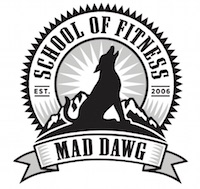The February coaches was awesome because we had Manish, who is a physician, came to speak to us about bones and bone density. It is important that all of our coaches understand the physiology of bones, and most importantly, how exercise affects bone growth because as you can see below, after 30 years, we are really in a battle to preserve the bone we have. Here are a few things we learned that affect our training and programming:
- Bone is dynamic. 5 to 7% of bone mass recycled weekly. All spongy bone (inner, softer layer) replaced every 3 – 4 years. All compact bone (outer, harder layer) replaced every 10 years.
- Wolff’s Law: Bones adapt and get stronger based on the load applied to them. The actual type of load that creates bone growth is a bending of the bone by pressure through the long axis of the bone!
- As intensity increases, i.e. the same load in a shorter amount of time or a larger load in the same amount of time, so does bone growth.
- You create your bone mass before the age of 30. After age 30, people can only maintain bone density – otherwise, they will lose 1 – 3% of density per year. Females will lose more density after menopause (estrogen effect goes away). In older athletes, if they stop exercising they can have accelerated bone loss, so it is important to keep exercising.
- Older adults may have less bone density – need to vary the stimulus but also need to be careful with the forces – jumping and running might be too much; load the long bones but do it gently, varied reps, varied weight.. give them a chance to go heavy, but also higher reps (there are several ways to create intensty.
- Bisphosphates, a class of drugs that prevent the loss of bone mass, can actually put some people at risk of spontaneous hip fracture. The hip fractures at the neck of the femur, which is very spongy and meant to bend and absorb. However, the bisphosphates can make bone more brittle by causing crystallization of the bone. These drugs are really only a short-term solution after which you have to build bone mass the old-fashioned way, gradually add load and intensity through exercise.
Periodically, we get comments that our workouts are too easy or that we take too much time with warm-up, etc. But as you can see from the information above, there is method to our madness. To train in a healthy way, we think it’s best to train “from the inside out.” Muscles pull on bones to generate force, but bones (and the tendons that connect the bones to the muscles) take a longer time to change/adapt. If muscles are stronger than the rest of the system, it is easier to get injured. Obviously, there are several factors that influence bone growth not just load. That is why recommend a fresh food diet to make sure you have all the nutrients that are necessary for bone growth. Finally, you will see why we prioritize position and movement over strength and power. Think of it as making sure the nail is straight before you whack it with the hammer.
We are super lucky to have Manish present to us!
Here is the presentation if you are interested.
